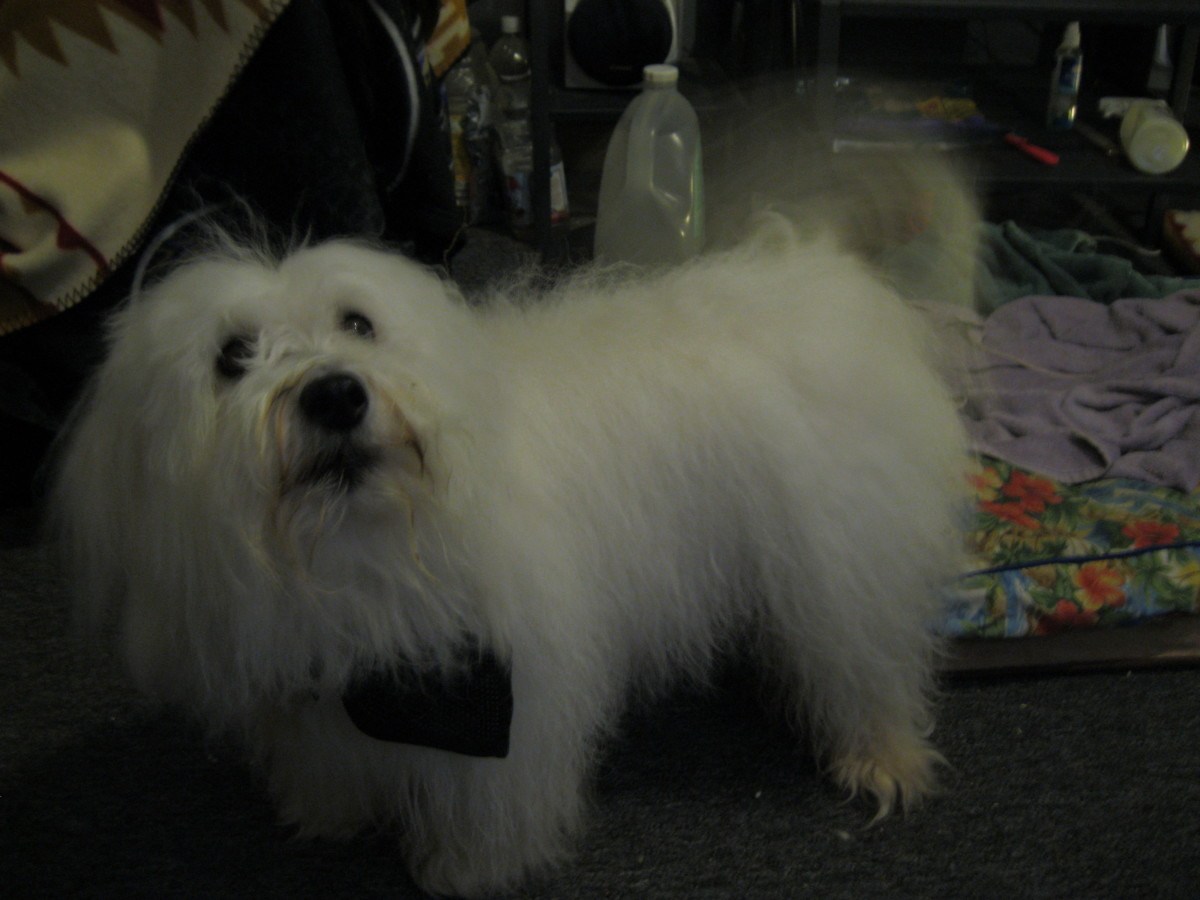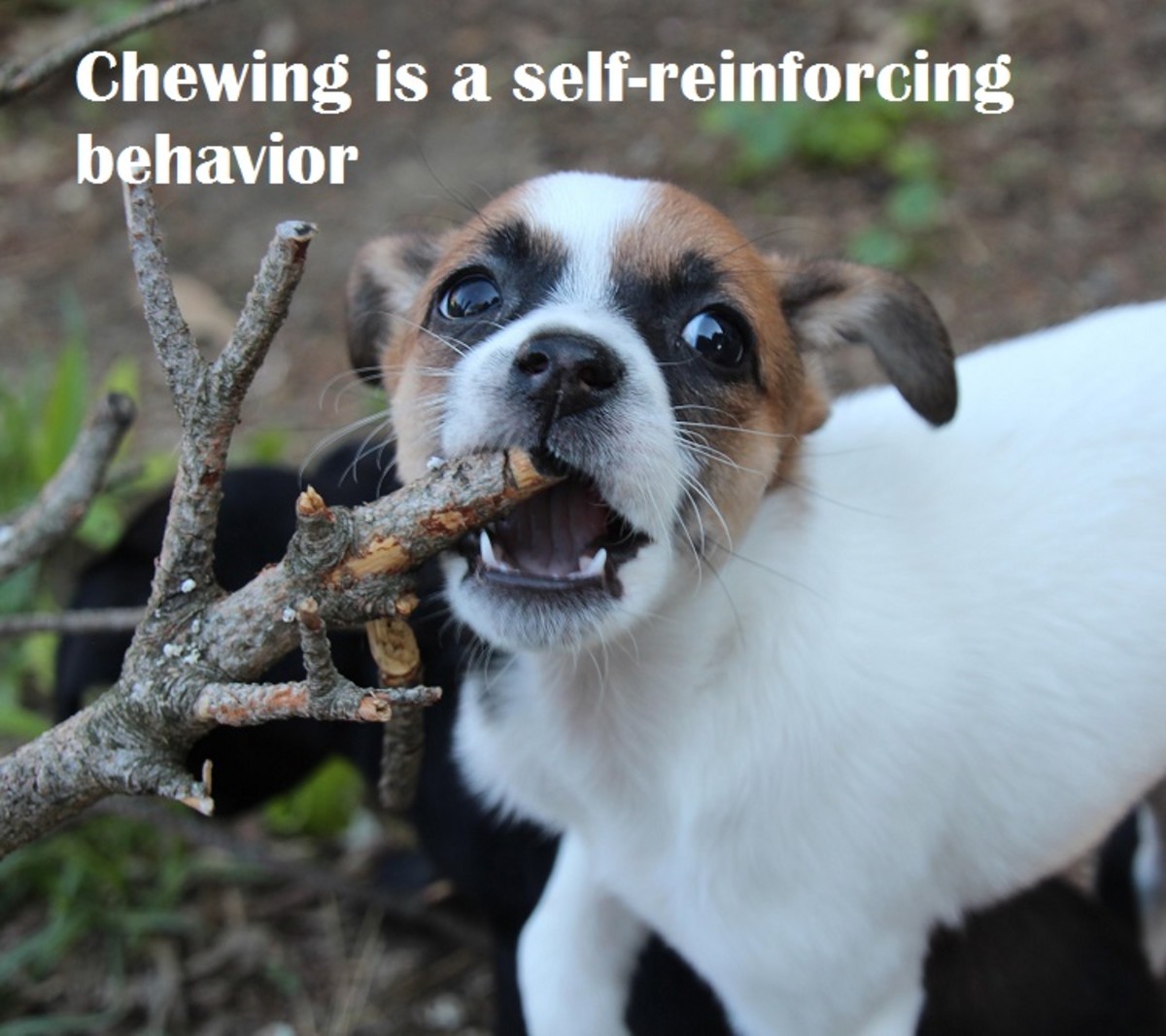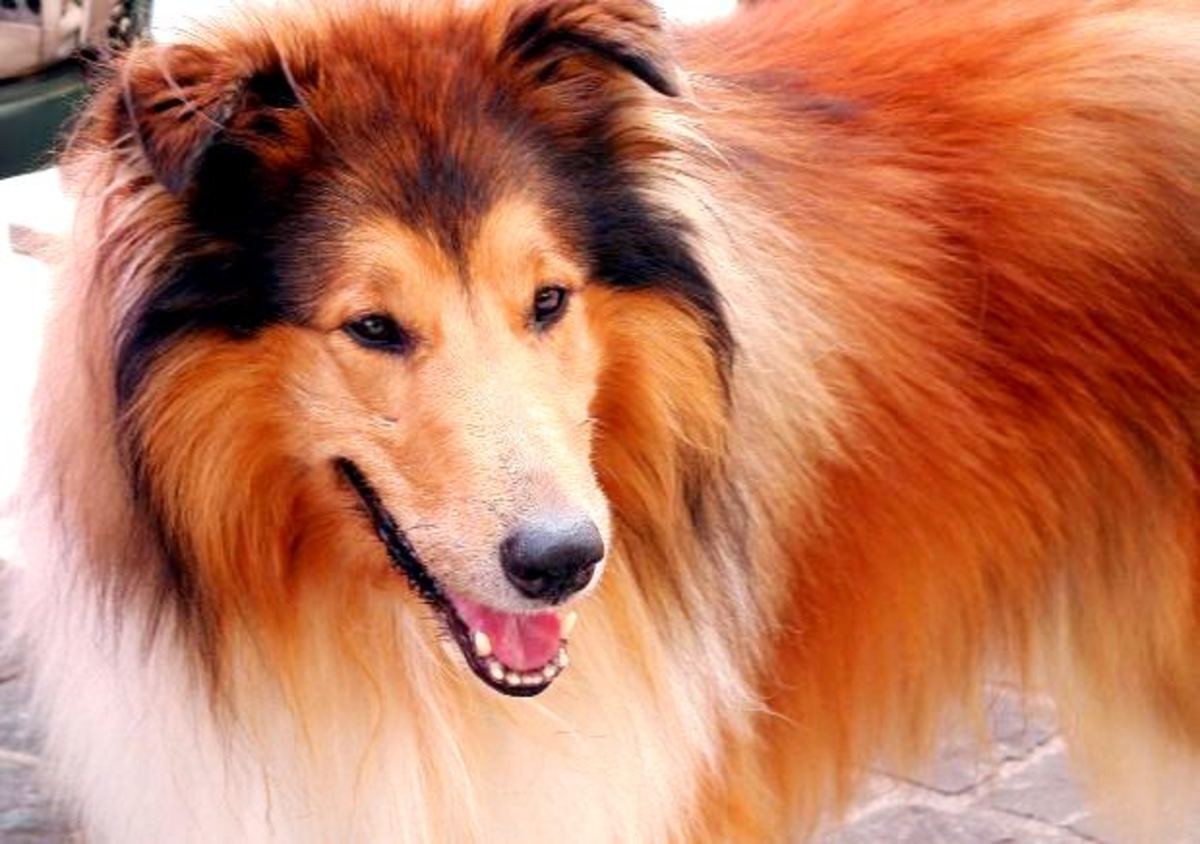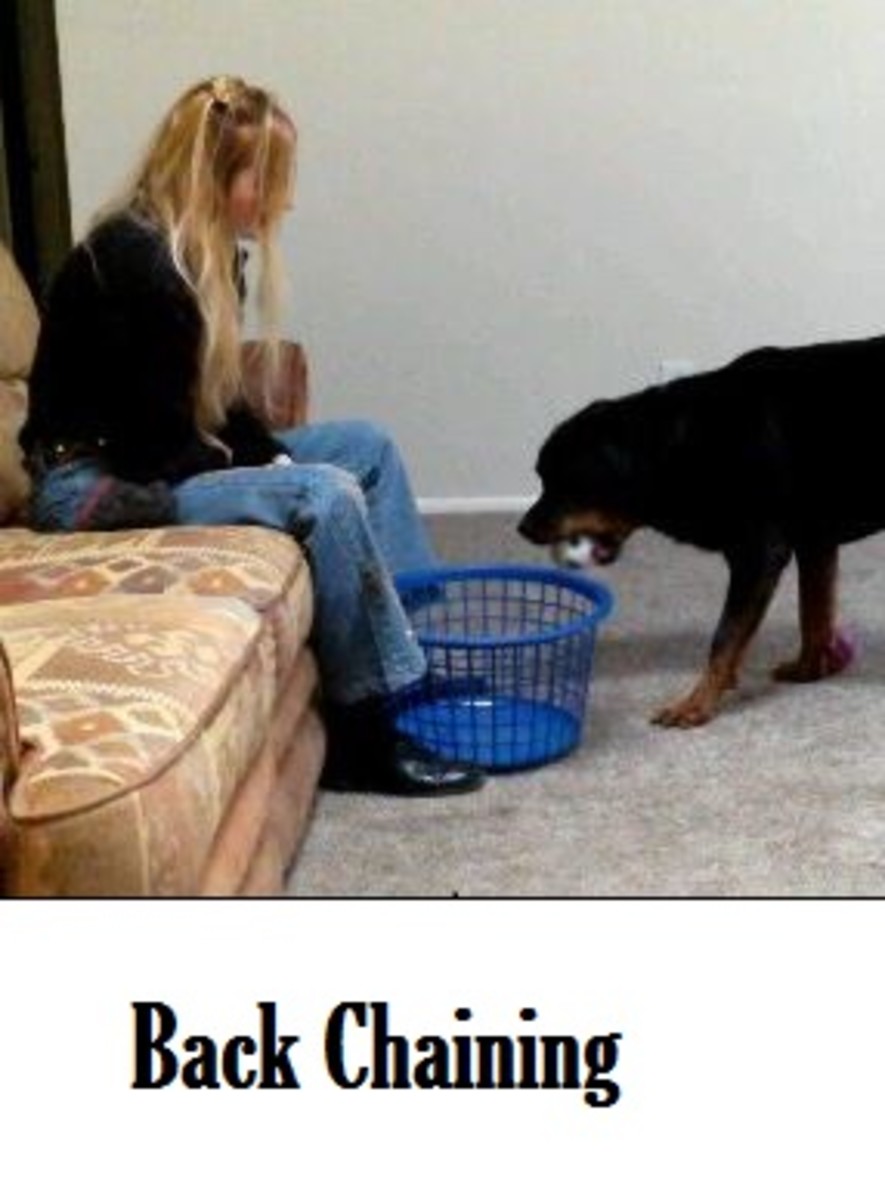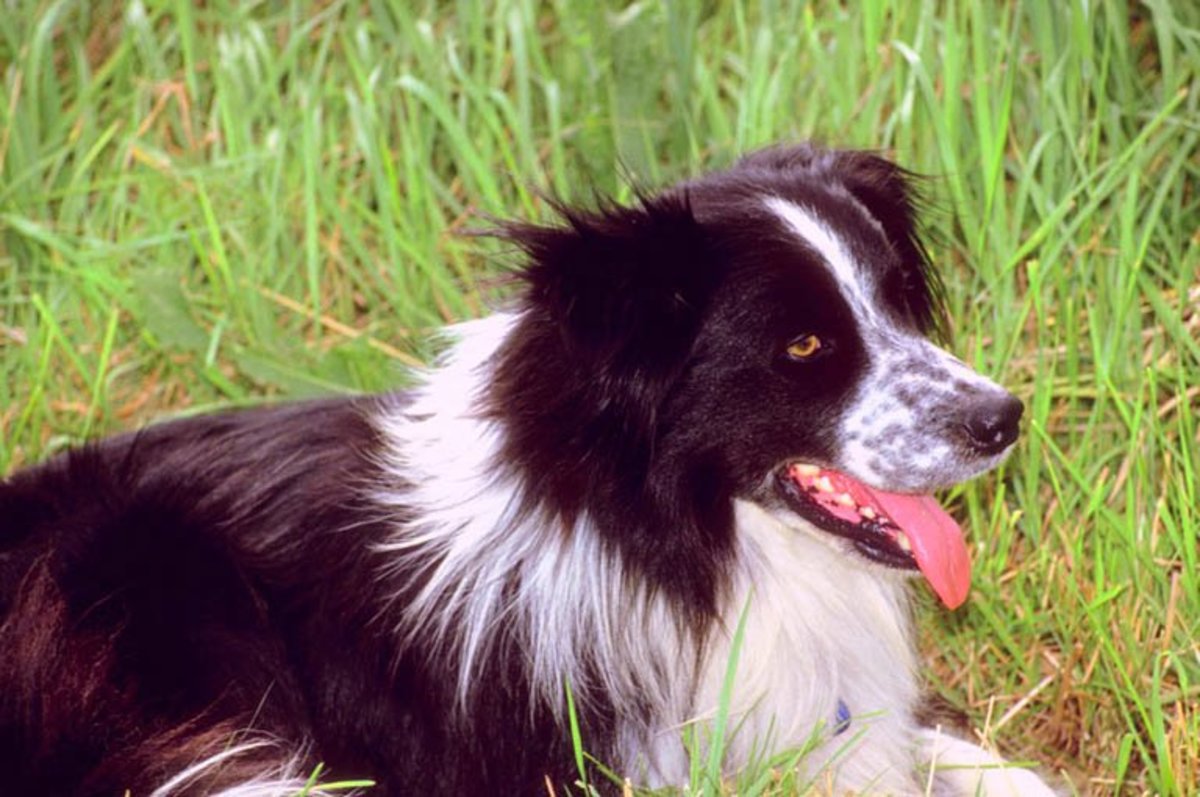Unlocking the Dog's Creative Potential
Creativity: the Door to Wally's Mind
When Wally was back in his old mindset, I struggled with how to train him. Traditional training would be out of the question. All this did was "shut down" his mind, basically making him too busy trying to appease me and panicking about what he thinks is about to happen to him. That's no way to learn anything.
So I had to look to other methods. Eventually, I settled on shaping. I've mentioned shaping here and there, but never really went into detail about how Wally and I got our feet on the ground with the method, and the advantages I see over even typical clicker training in regards to Wally.
Perhaps it can help some other dog/human partners just getting started or those who have thought about it, thinks it sounds good, but never knew how to get started.
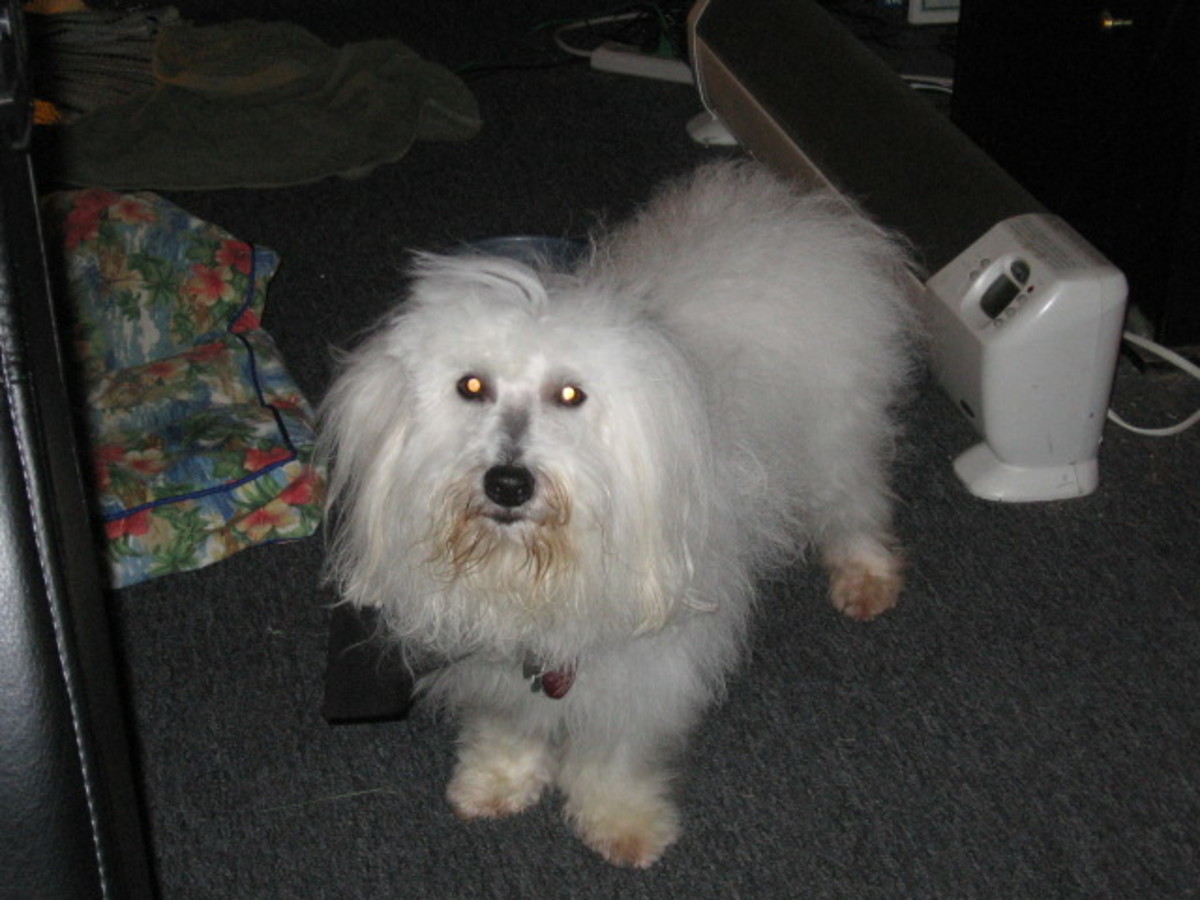
Things You Need
-A reward marker. This means the signal that you'll use to tell the dog two things (both of which happen at the same time). First, that the behavior was correct. Second, that you can get come get your reward. These things both occur at the same time in the dog's mind, thanks to operant conditioning.
-Rewards. Ideally, this should be something that can be delivered quickly, consumed quickly, and prepared easily. The first is so that there's minimal delay between behavior, marker, and reward. The second is so that the dog can enjoy his reward, register he got it, and get back to the task, helping building intensity on the task and a rhythm to the session. And the last is for your convenience, as well as for times when you need to prepare more rewards in the middle of a session.
-Patience. This doesn't take forever, but it won't (typically) often in the course of a few trials. Properly charging the marker does take time, let alone progressing through a behavior in small-sized steps.
-And, of course, a dog. Any dog willing to work with you.
Shaping Advantages
Primarily, the advantages I saw in shaping over typical clicker training in regards to Wally:
- Tasks are broken down into small pieces, providing for more reinforcement opportunities and easier mini-tasks he can accomplish.
- No intimidation. I'm not giving any directions, commands, or showing any body language that could be misunderstood as social pressure. Big for his overly sensitive personality and lack of confidence back then.
- A different approach. Perhaps typical clicker training seemed too much like the usual "traditional" training, which may prejudice his mind to prepare for the worst.
- The dog proceeds at somewhat at his own pace. While I will indeed push for progress, it's inherent to the method to watch the dog and his mastery of each mini-task.
- The dog is encouraged, if not required, by the nature of the method to experiment and to analyze what is working and what is not. This would develop him to take his own view of the problem and provide active feedback to me about what he's thinking about the problem.
These traits would manifest over time to slowly break down the walls in his mind and venture out with his own ideas on solving a problem. He wouldn't just sit there waiting for what to do and if it doesn't work and I don't reward him, he doesn't get more anxious with each failure to the point where he can't even enjoy the success.
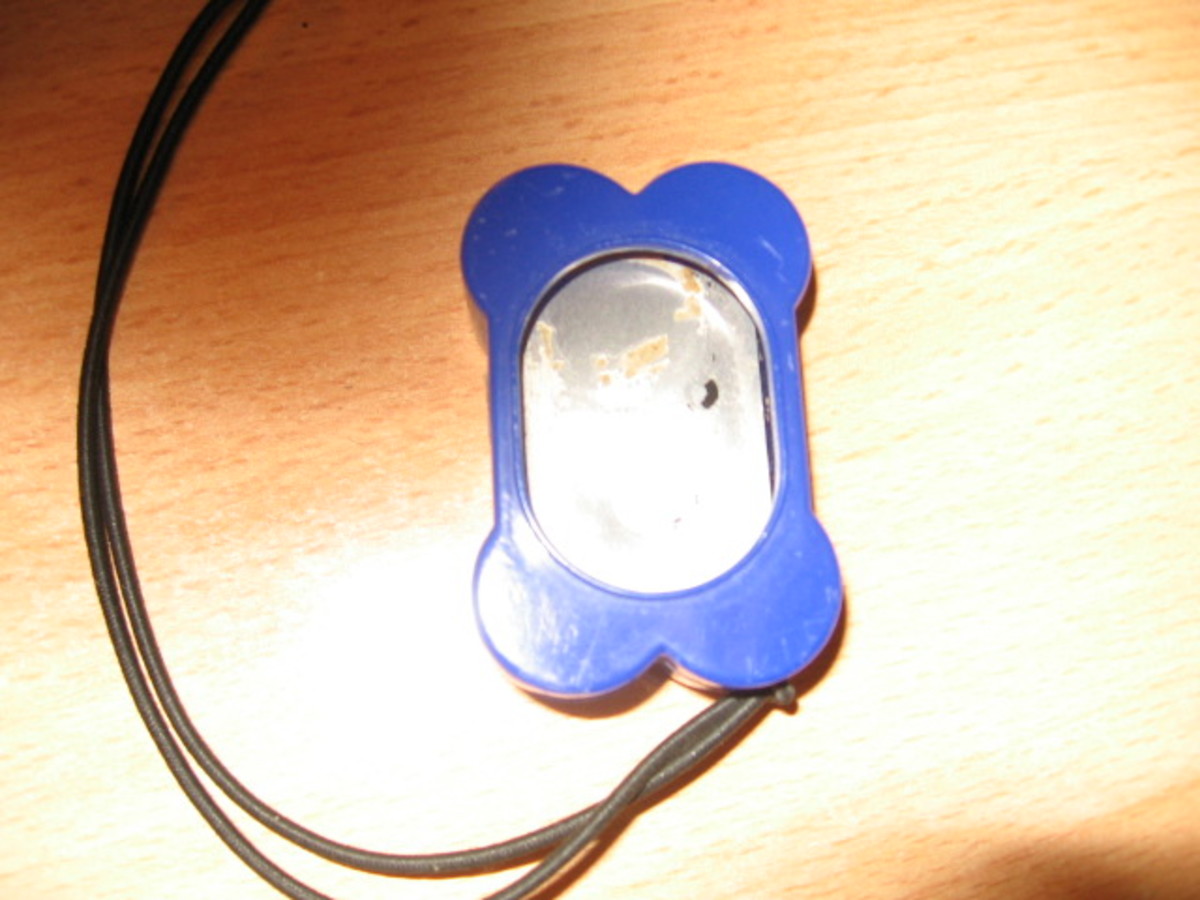
This Is Means You Got It Right. Got it?
Initially, the first step to shaping is the first step in clicker training. After all, shaping is just a different application of clicker training principles. While these differences manifest deeper in the process, the beginning is the same. Charge your marker.
Step 1: Charging the Marker
This is easy. Use your would-be marker, then give a reward. This builds the initial association. Give the marker, then immediately give a reward. I used very small pieces of food. Small so they don't get too many calories and also so that they can be delivered and consumed quickly. Just repeat this over and over again. And again. And then some more. And then over the course of some days. You want to get this to where the instant you give the marker, the dog is whipping around looking for the reward. Now you got him hooked.
Why does this work?
It's Pavolv's dog all over again. What Pavlov's innovative experiment proved was that a stimulus (event) that used to mean nothing to the dog can be given a meaning to the dog by repeatedly associating it to something that does have meaning to the dog. This is classical conditioning.
Pavlov used a bell as the stimulus and food as the reward. Food is something that has meaning to the dog. So, when the bell rang and food appeared, the dog began expecting this to happen, and strongly as the process continued. What also happens is that the dog's mind remembers the event that caused the bell to ring. This is where we can use it in operant conditioning.
Now, Give Me Something. Anything. Really.
Next, we need to teach the dog it is indeed okay to just do something. Go ahead. Do something. Come on. Do something!
Okay, so Wally isn't exactly being a willing participant here. He's standing there, panting, looking me with those, "help me" eyes. It was so hard for me to not help him out, but then, we're not getting into shaping. He won't learn to just strike out and try something.
Le sigh. No one said getting a fearful dog to act on his own would be easy. In fact, it just sounds kind of stupid when I say it out loud. "You're scared of getting punished for doing something I didn't say to do, so just do something without me saying what it is I want."
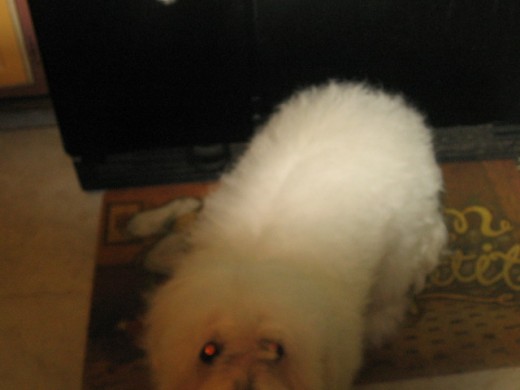
The First Fearful Step Into The Unknown...
Step 2: Getting that first offered behavior.
So, I have this dog who thinks I'm trying to trick him into being punished. What can I do? Well, I did nothing. I just waited. I didn't look at him directly, but out of the corner of my eye. Lo and behold! He sat down. I clicked him so hard that my thumb hurt and shoved a treat down his throat, almost literally, due to my excitement.
Oh, and he is a dog, and dog sniff things they've never seen, right? I put something down. The instant he even shifted his weight towards the object, click and here's the reward. He's still looking at me like he's suspicious, but he did get a tasty treat. So he looked at that object again, click and another reward. At this point, that food drive, which I would come to discover is high, even for a dog, was starting to surface. I was getting interaction with that object. I was clicking faster. The first steps have emerged.
I kept doing this simple little exercise for quite some time. It was not the time to start putting end goals to this. I had many more walls to break down and much more proving I had to do. Rushing could ruin it all. Being too strict with my requirements would jeopardize the fledgling trust in the process.
Remember Dora
Remember how I explained about Dora and her teaching style? Think how you'd teach a little kid how to do something. Just about everything seems complex and mysterious to the mind of a young child.
Dora breaks stuff down into pieces that almost drive me crazy even for the simplest things (Meanwhile, Wally is just being star-struck by his "girlfriend" on TV). Think like that when it comes to breaking down behaviors. You almost can't get too small. In fact, I'd say "too small" happens only when it's a behavior that's so small, it's hard to see if your dog did it.
Otherwise, if you can see your dog do it, think about if it's still not made of multiple behaviors that are smaller, but can still see your dog doing.
Now, Time For ME To Train...
Step 3: Changing Mindset In Regards to Behavior
Now what do I mean? I had to understand that what I thought of as one behavior is really composed of lots of other behaviors. So, I made it a point to look at behaviors, human or otherwise, and break them down into smaller actions, called "thin slicing".
I would look at everything, from pitchers in baseball to videos of dogs doing fancy tricks to thinking about the things I do, like sitting in a chair, taking a sip of tea, putting my pants on. I would make a list of all the small actions that lead to the "single action". I would then take that list and see if I couldn't break it down further. Like if I put down "put one leg into my pants", I would break that down into "hold pants in front of me", "bend at the waist a bit", "lift my leg up", "put leg into corresponding pants leg". I could even put "lift my foot up" before "lift my leg". You can't lift your leg with the foot attached to that leg still on the floor!
How About Your Dogs?
If you train via shaping, did your dogs struggle at first in grasping the method?
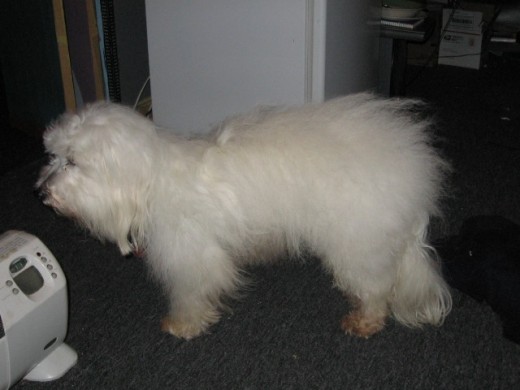
So...What If He Can't Progress?
That's a good question. My answer was to go back to the last step he could complete. I'm in charge of what criteria is worthy of a reward. Wally never really knew where the bar was. He got information from the marker, or lack of, as to where he is in the process.
As such, nothing stops me from clicking and rewarding again for a previous step. If he's still there, and perhaps even struggling with that step again due to waning confidence, it's in mine and his best interest to "go backwards" and remain there.
If he continues to struggle, then I'll get one more success and then call it for that session. I always want him to end after feeling a success. This is more than just a feel-good for me. I want his latent learning to work on the success he just had. If I end on a failure, the last thing he'll process is that lack of success, and it may make him hesitant to want to enter the shaping process again, which I do not want ever, but especially with the way he was back then!
Time For Practical Application
Step 4: Repeat Step 3 but With a Task I Wanted Wally To Do
Now that I practiced breaking down behaviors almost to the point to where it looks silly, it's time to do to it with a task I want to get my dog to do. Back then, it wasn't sitting on scales or opening doors. It was simple stuff, like nose targeting (Touching things with his nose).
So how do I break down something that simple?
- Look at object
- Go to object (if sitting, 2a is stand up, 2b is take a step)
- Reach nose near object
- Lightly touch nose to object
- Forcefully touch nose to object
Five steps. Okay, this should be do able.
Step 1 was easy enough. Looking at something - oh, he'd do that, if only to make sure it wasn't going to get him. Step 2 - already, I'm feeling resistance. He's like "heck no! I don't know what that is!" So I kept doing step one, until he would look at it, then back at me in quick succession. Now, I hold out. He's expecting those glances to keep working. They aren't. He's like "What the...?" So now he has to try something else because he wants that reward. He was sitting at the time...he stood up and took a step! That got a click and a reward.
So now he's standing. He looked at it again. Nope. I'm not taking that anymore, buddy. He took another step. Now that's a click and a reward. Now, he's right up on the object (I had to keep it as easy as possible without eliminating steps). He reached out with his nose to sniff. Click and reward. He did it again, another click and reward. He touched it! Click and reward! He did it again! A click and another reward! Again! Woot!
So I praise him and call it a session. Let him end on his success and then allow him to rest and absorb what happened.
And How About You?
Did you yourself struggle with "thinking in shaping" or "teaching like Dora" if you prefer?
Correction: Shaping Style
Try if at all possible to avoid aversives during shaping.
During shaping, you don't want to give any aversives if you can avoid it. Not only is this extra input from you, where ideally you just want your marker and your rewards to "talk" for you, the dog isn't getting to figure it out on his own what's happening. You're telling him outright.
The ideal correction during shaping is withholding the marker and thus the reward. This is called negative punishment, technically speaking (see Tactics of Training for more information on this technical vocabulary), and it is your ideal "no, I don't want that right now" message.
Yes, this is the same as the holding out where you stop rewarding a behavior to facilitate the next step. That's good, because you are staying in the process, he's in the same mindset. You are not distracting him with your sounds (your words) or your body language (only body language he sees is you getting his reward otherwise), or any social pressure, shifting his mind to a different drive/focus.
Videos About Canine Creativity
- Offering and Shaping Behaviors with your dog. Creativity and play in training. - YouTube
The key elements in dog training involve partnership through creativity and play! Teach your dog to offer behaviors and to take charge of training sessions, ... - Dogs Demonstrate Creativity, Too | Psychology Today
Pet dogs succeeded in a creativity test used with marine mammals. - Do Dogs Have Creativity? - YouTube
From the beach in Sydney, Australia, Dr. Brian Hare, Founder and Chief Scientific Officer of Dognition.com, answers a community question about dogs and their...
Wally, This Is Your New Way Of Learning
Step 5: Continuing to Build the Love of Shaping
To continue building his experience in shaping, I continued to teach various "simple" behavior via shaping. This served two purposes:
- Kept the process sharp in his mind and he got to practice it more often.
- Expanded his arsenal of behaviors from which he can choose from in the future.
Once he had a decent amount of behaviors, I wanted to build in the creativity aspect. Just throwing things out there and seeing what happens!
To start our game, what I would do is sit somewhere, and just wait for him to start doing things. He could do whatever he wanted. At first, I'd even click and reward just him giving me eye contact (that is a behavior after all), and then we could go from there.
Anything else would get him a click and reward. He could go paw something. Nose touch something. Bark. Lie down. Stand up. Whatever. I was also fair game. If he wanted to paw me, that's fine. Nose touch me. Put a paw on my foot. All good. Repeating behaviors is also fine. If he repeated too many times for my liking, I'd hold out until I got another behavior. Remember, it's the "I don't want that right now." message.
I would keep playing this game, even foregoing learning more behaviors. I just wanted to develop this attitude of throwing stuff at the wall and seeing what sticks - or clicks, I should say!
Keep in mind, this happened down the road, after he was well-schooled
in the concepts of shaping and his confidence was growing. Doing this
too early in the process could frustrate the dog. Build up the basics, and get him used to thinking in the shaping mindset first.
This content is accurate and true to the best of the author’s knowledge and is not meant to substitute for formal and individualized advice from a qualified professional.
© 2010 Brian McDowell

